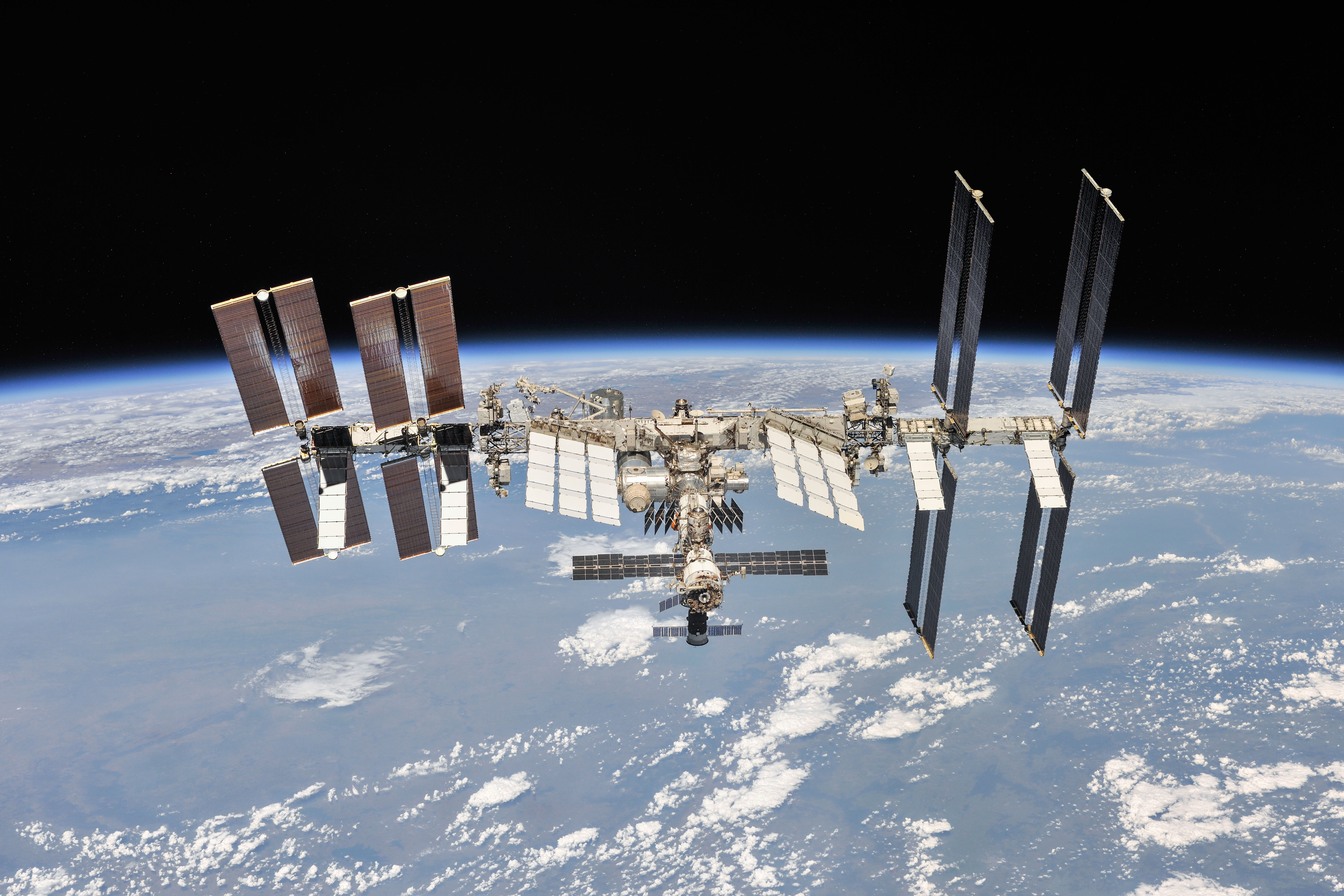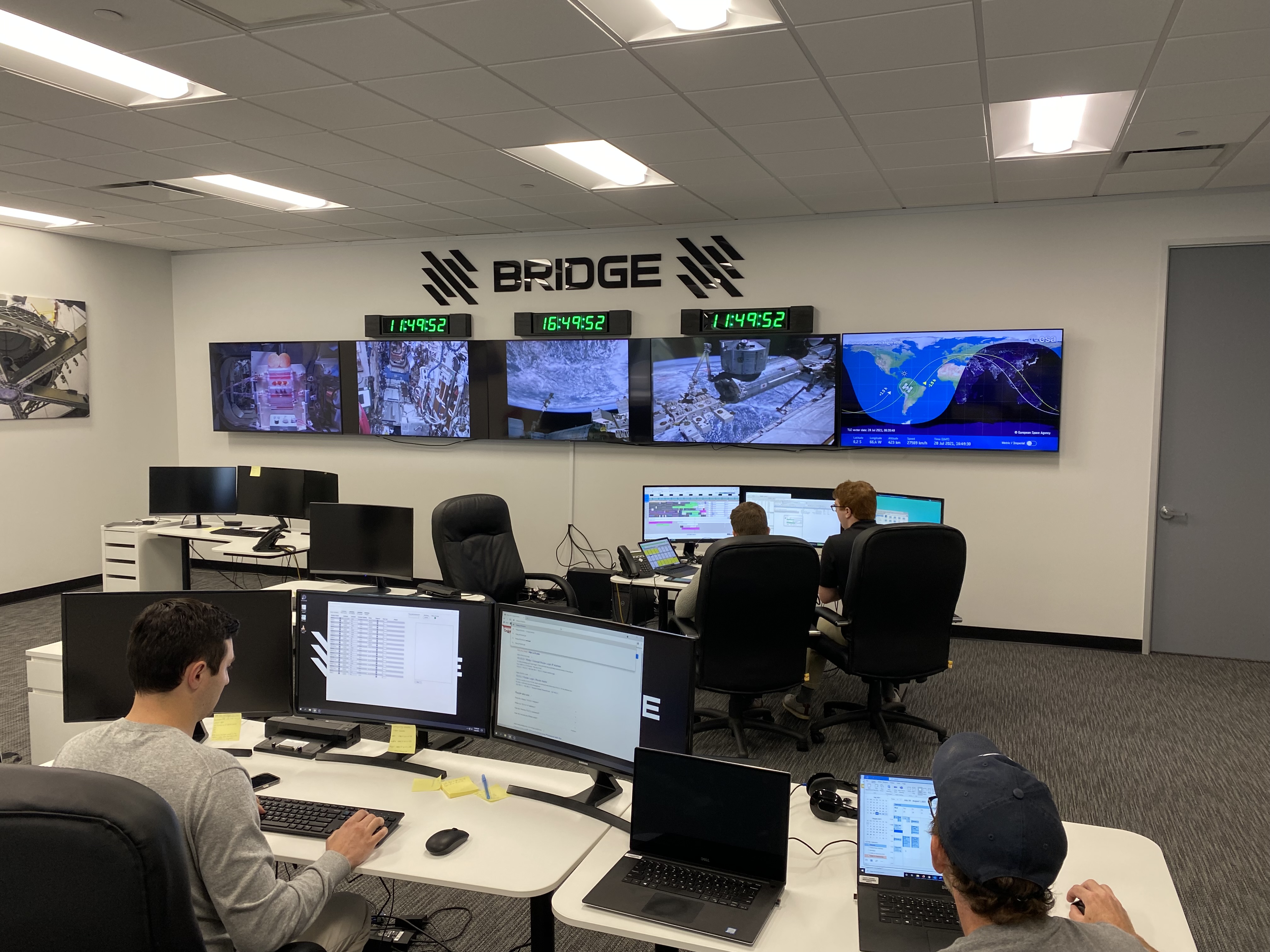Music masterpiece 'Clair de Lune' beamed to space station in NFT 1st

The commercialization of the final frontier continues apace.
Last week, the companies Nanoracks LLC and Artemis Music Entertainment teamed up to beam a recording of composer Claude Debussy's piano masterpiece "Clair de Lune" ("Moonlight") to and from the International Space Station.
Music has been sent to, and made on, the orbiting lab before. But the two companies minted this version of "Clair de Lune" as a non-fungible token (NFT), making it the first music NFT to reach orbit, Artemis Music representatives said.
Photos: Building the International Space Station
"The cosmic perspective of space inspires a cognitive shift in humans," Artemis Music co-founder Bob Richards said in a statement. "'Clair de Lune' perhaps comes as close as possible to stirring the emotions of awe and wonder experienced by space travelers."
Debussy published "Clair de Lune" in 1905. The space-flown version of the classic, which you can find here, was performed by Hong Kong-based pianist Wing-Chong Kam on July 19 of this year. On July 28, it was beamed from Nanoracks' Houston headquarters to the company's Bishop airlock on the International Space Station.
The digital file zoomed around Earth for about 90 minutes, completing one orbit in the process, before being transmitted back down and minted as an NFT, Artemis Music representatives said.
Breaking space news, the latest updates on rocket launches, skywatching events and more!
NFTs are pieces of data, stored in a digital ledger known as a blockchain, that represent unique assets — hence the "non-fungible" part of the term. The last few months have seen a boom in NFT art sales, with some of these digital tokens selling for millions of dollars.

Artemis Music Entertainment, a new company based in Cape Canaveral, Florida, aims to carve out its own niche in the NFT scene. Last week's "Clair de Lune" action was a test of its Artemis Space Network, a new space-based commercial platform for music and entertainment media.
"The way that you integrate the blockchain contract with telemetry that would prove where the file was and when it was in space had never been done before," Richards, who's also the co-founder and CEO of the robotic exploration company Moon Express, told Space.com.
"So, the first node test of the Artemis Space Network was to really prove out communications protocols and the process of minting the digital work into an NFT that would be meaningful, valid and authentic," he added.
If all goes according to plan, many artists, musicians and other creators will use the Artemis Space Network in the future, beaming their own works to orbit — and, eventually, to the moon, Mars and beyond, Richards said. Artemis Music will get a percentage of the ensuing revenue, operating much as streaming providers such as Spotify do, he added.
Artemis Music also has some more idealistic aims for the venture, Richards said. For example, the "Clair de Lune" NFT will eventually be sold, but the proceeds will go to the Artemis Music Foundation, which aims to support artists and get people excited about space exploration.
"We're trying to do something that's really genuine, authentic and provides real inspiration capability to musicians, artists, creators, and to people who don't feel connected to space," Richards said. "It's the accessibility to space that we're trying to bring to every creative globally that doesn't exist right now — the actual capability of interacting with space with their creative process and with their creative work."
Artemis Music's business model is one of a number now finding a foothold in the final frontier. For example, Jeff Bezos' Blue Origin flew its first paying customer to suborbital space last month, on a flight that also included the billionaire himself. And Richard Branson's Virgin Galactic is poised to begin commercial operations of its suborbital spaceliner VSS Unity in early 2022, provided a few more test flights this fall go well.
Elon Musk's SpaceX is already launching NASA astronauts to and from the space station aboard its Crew Dragon capsule, and the company is gearing up for an all-private mission this fall. That coming flight, known as Inspiration4, will carry billionaire Jared Isaacman and three other people on a three-day trip to Earth orbit, with no station meetup.
Houston-based company Axiom Space has booked several missions to the space station with SpaceX, the first of which is scheduled to launch early next year. Axiom also plans to launch a commercial module to the station in the next few years and eventually operate its own commercial outpost in Earth orbit.
Mike Wall is the author of "Out There" (Grand Central Publishing, 2018; illustrated by Karl Tate), a book about the search for alien life. Follow him on Twitter @michaeldwall. Follow us on Twitter @Spacedotcom or Facebook.

Michael Wall is a Senior Space Writer with Space.com and joined the team in 2010. He primarily covers exoplanets, spaceflight and military space, but has been known to dabble in the space art beat. His book about the search for alien life, "Out There," was published on Nov. 13, 2018. Before becoming a science writer, Michael worked as a herpetologist and wildlife biologist. He has a Ph.D. in evolutionary biology from the University of Sydney, Australia, a bachelor's degree from the University of Arizona, and a graduate certificate in science writing from the University of California, Santa Cruz. To find out what his latest project is, you can follow Michael on Twitter.
